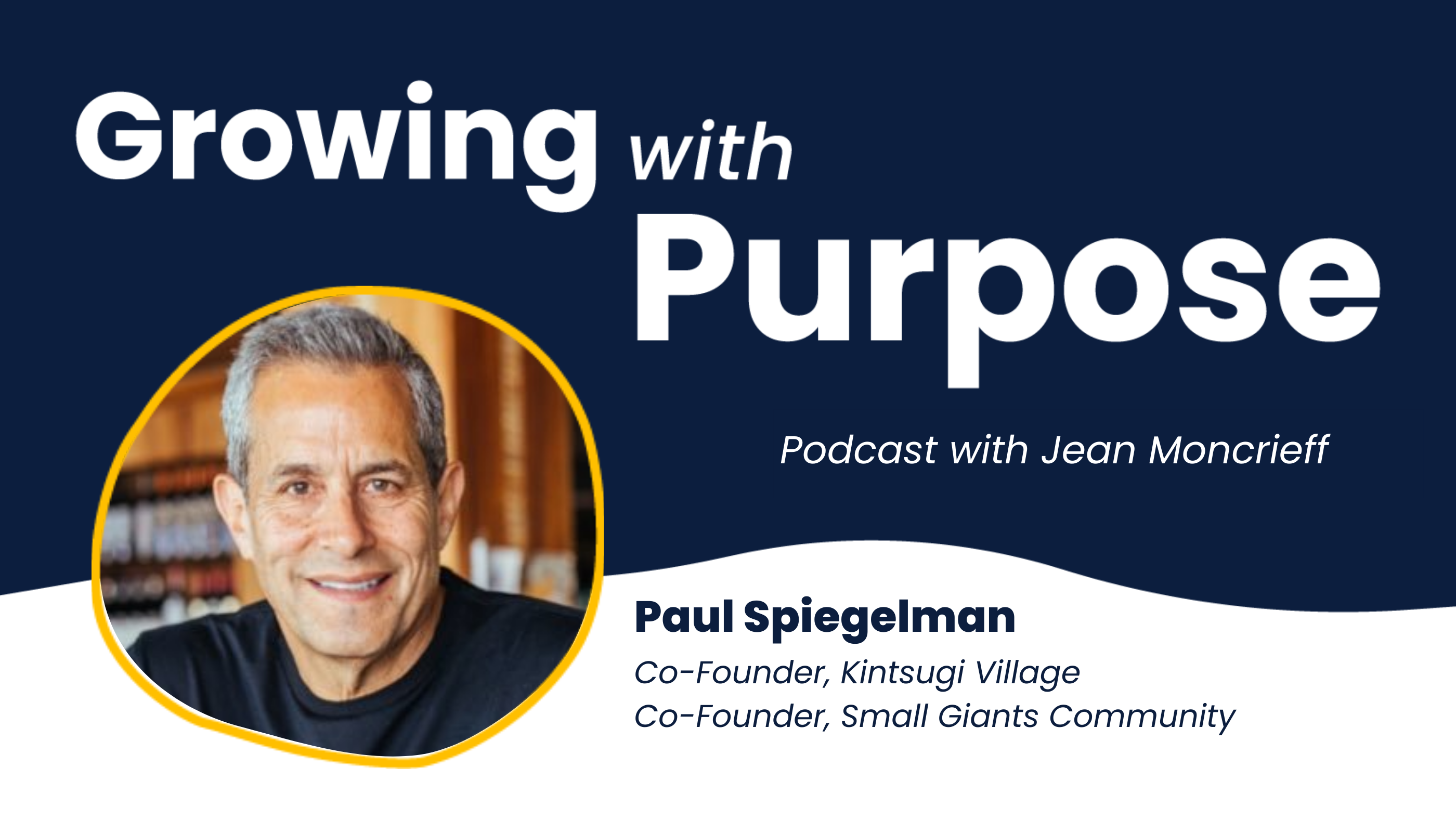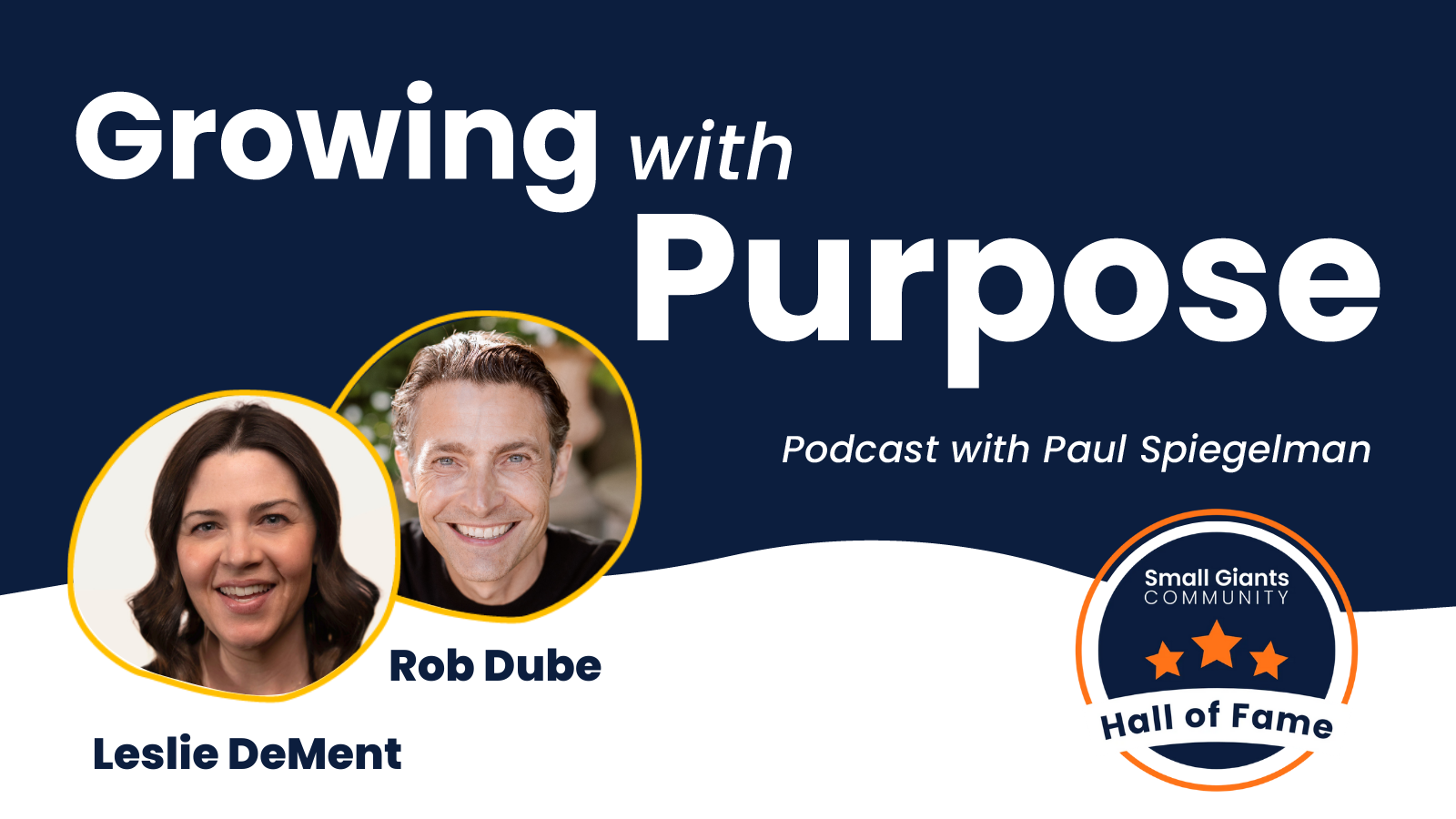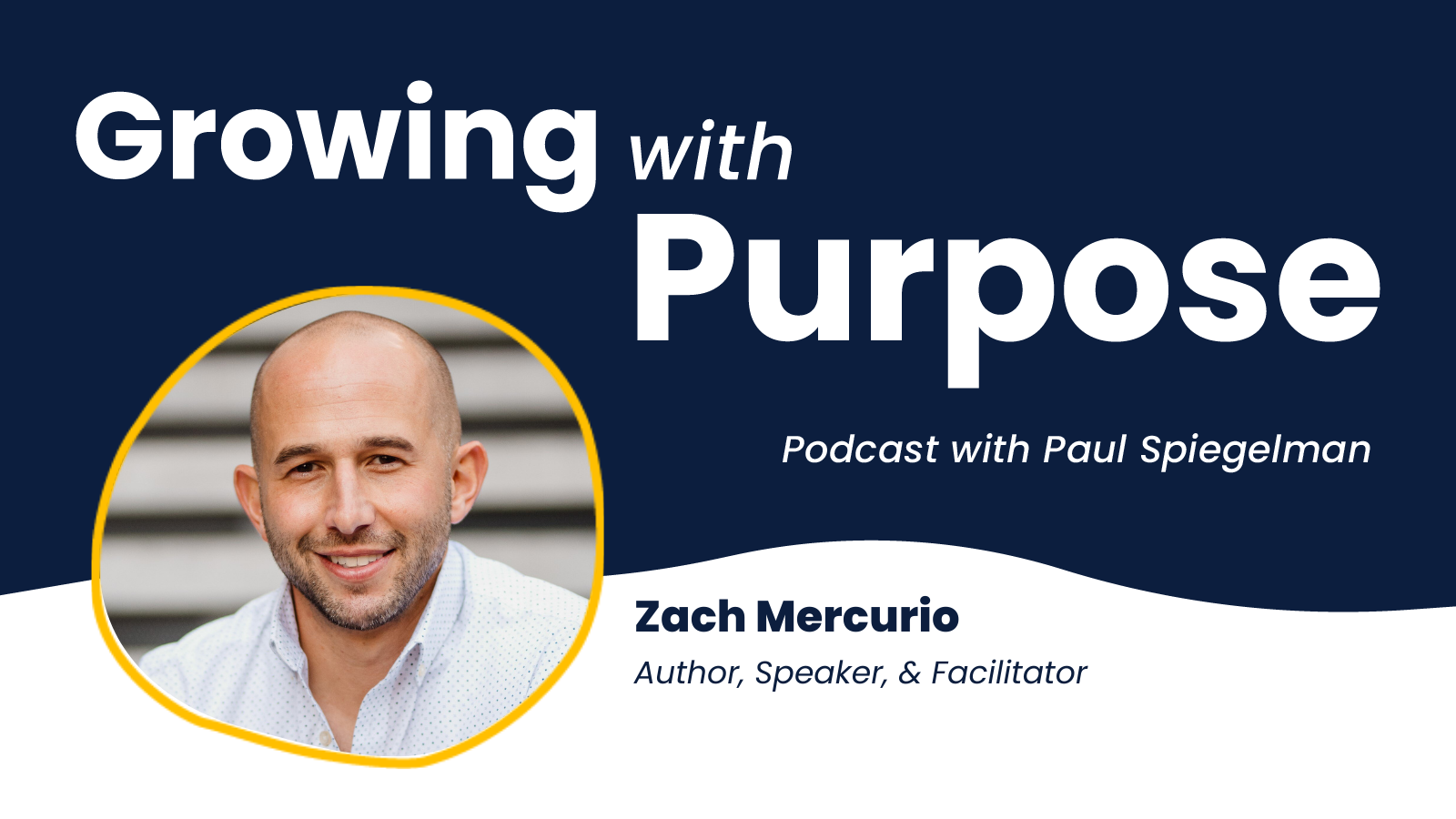The Business Benefits of Being a Mindful Leader

How Mindfulness Works and Why It’ll Make You a Better Leader
Have you meditated lately? Odds are that you or someone you know has — a recent report found that 4 in 10 adults in the United States meditate at least once a week. As those individuals bring their practice into the businesses they lead, our workplaces are getting more mindful, too. But what does it really mean to be mindful, and why should purpose-driven leaders care?
At its core, mindfulness is as simple as it sounds: it’s our ability to be fully present and aware, without overly reacting to what’s going on around us. On the individual level, that usually means having a mindfulness practice that creates space for you to take time to breathe and become a better leader. For your business, it can be even more impactful: many purpose-driven leaders are bringing mindfulness into the workplace and seeing incredible results.
Take a cue from these purpose-driven leaders and learn how you can use mindfulness practices to build your leadership and your business.
The Personal Benefits of Mindfulness
Mindfulness is a tool for becoming a more calm, clear, and consistent leader. When you meditate, you’re training your attention to focus on the present moment. Mindful leaders are often better listeners, creative problem-solvers, and a positive influence on company culture. In fact, many leaders have turned to meditation to tackle some of the biggest challenges facing their businesses.
Here’s how mindfulness helped these purpose-driven leaders navigate pivotal moments and become a better leader:
Calm Within the Storm
 Rob Dubé and his business partner, Joel Pearlman, sold imageOne to a billion-dollar, public company in 2004. On the surface, it seemed like a great opportunity: they were staying on to operate the business as a wholly-owned subsidiary, and it would bring new opportunities and added security for their employees. Rob and Joel quickly realized they didn’t click with the company’s new corporate culture, and they deeply missed their daily interactions with employees, clients, and the community. Stressed and unhappy, Rob reached his breaking point one day while on vacation with his family in Northern Michigan.
Rob Dubé and his business partner, Joel Pearlman, sold imageOne to a billion-dollar, public company in 2004. On the surface, it seemed like a great opportunity: they were staying on to operate the business as a wholly-owned subsidiary, and it would bring new opportunities and added security for their employees. Rob and Joel quickly realized they didn’t click with the company’s new corporate culture, and they deeply missed their daily interactions with employees, clients, and the community. Stressed and unhappy, Rob reached his breaking point one day while on vacation with his family in Northern Michigan.
“I was frustrated, stressed out, and on the verge of tears,” says Rob. “I looked over at a chair in the corner of the room and said to myself, ‘Rob, go sit in that chair and breathe in and breathe out, just like you've read about.’ I did, and I felt just a little better. The world didn’t change. My problems didn’t go away. I just felt better.”
Not long after, Rob and Joel had the opportunity to buy back imageOne, and they dedicated themselves to building an award-winning Small Giants company. Looking back, Rob credits his meditation practice for giving him the clarity and focus to navigate such a tumultuous decision.
More than twelve years later, here’s how Rob practices mindfulness:
-
A daily meditation practice. Rob meditates every morning for forty minutes and every evening for 20 minutes. When he uses apps, his favorite are Meditation Studio, Headspace, 10% Happier, and Insight Timer.
-
Bi-annual silent retreats. Rob attends at least two, week-long silent meditation retreats every year.
Creative problem solving
 After experiencing a 23 percent comparative increase through August 2008, sales at Flexografix then dropped 45 percent the next month. The company’s CEO and Chief Technical Officer, Ken Pavett, did his best to navigate the crisis, but it didn’t take long for him to have his first panic attack. “Up until then, I collected mindfulness tools: Steven Halpern music, crystals, a $2,500 meditation chair — but I never committed myself,” says Ken. “But after that experience, I realized I needed to take care of myself in order to take care of everyone that depended on me. The next day, I sat in a chair, got really quiet, and meditated. That was the start of a six-and-a-half-year practice of meditating at least six days a week.”
After experiencing a 23 percent comparative increase through August 2008, sales at Flexografix then dropped 45 percent the next month. The company’s CEO and Chief Technical Officer, Ken Pavett, did his best to navigate the crisis, but it didn’t take long for him to have his first panic attack. “Up until then, I collected mindfulness tools: Steven Halpern music, crystals, a $2,500 meditation chair — but I never committed myself,” says Ken. “But after that experience, I realized I needed to take care of myself in order to take care of everyone that depended on me. The next day, I sat in a chair, got really quiet, and meditated. That was the start of a six-and-a-half-year practice of meditating at least six days a week.”
Today, not only has the company recovered, but Ken is a happier, healthier, more centered leader than ever before. Ken credits his mindfulness practices for making him a better leader, father, partner to his girlfriend, and person. “I have customers and suppliers who hug me when they see me,” says Ken. “It wasn’t that way before I began my personal transformation process.”
Here’s how Ken practices mindfulness:
-
Mindfulness practices. After six and a half years of meditating almost every day, Ken’s meditation practice has evolved into other meditative modalities. Meditation was a catalyst for opening him up to other forms of mindfulness and today, he’s a practicing Buddhist and is actively involved in Higher Brain Living as well as a few different organizations that practice mindfulness or expanding consciousness.
-
Retreats. Ken has attended six silent meditation retreats over the last twelve years, ranging in length from one day to three days.
More present with others
 Anisa Telwar Kaicker started Anisa International in 1992 at 24 years old — and at the time, most of the CEOs around her were men. As a result, she adopted a tough approach to leadership in order to survive in that climate. But as her business grew, so did her level of stress. When one of her mentors suggested she try meditation so that she could be more calm and centered in her work, she started researching the science behind it and eventually tried it out.
Anisa Telwar Kaicker started Anisa International in 1992 at 24 years old — and at the time, most of the CEOs around her were men. As a result, she adopted a tough approach to leadership in order to survive in that climate. But as her business grew, so did her level of stress. When one of her mentors suggested she try meditation so that she could be more calm and centered in her work, she started researching the science behind it and eventually tried it out.
“I realized that was the person I needed to be to get where I’m going,” says Anisa. “I’m at my best when I’m being authentic, real, and transparent. Recently, an employee came up to me and said, ‘When I’m with you, I feel calm.’ No one had ever said that to me before.”
More than two years later, here’s how Anisa practices mindfulness:
-
A daily meditation practice. Anisa starts every morning with 15 minutes of meditation. She has a special place in her house where she can sit on her mat, light incense, and be with her thoughts. It took her nearly one year to build up her ability to focus or even sit still for that long, but she's happy she stuck with it. "Meditation helps me to clear my mind, focus on what’s important, and develop some of my most creative ideas," says Anisa.
-
Silent retreats. Anisa has attended two silent meditation retreats, and each has been uniquely gratifying. "When I feel scattered, overwhelmed or generally burnt out, silent retreats give me the opportunity to escape the constant distractions — emails, phone calls, texts, meetings — of running my business," says Anisa. "I gain a wider perspective, giving myself thinking time to more effectively problem-solve and lead my organization."
Mindfulness in the Workplace
Meditation makes sense as a personal practice, but how are purpose-driven companies implementing mindfulness in the workplace — and is it worth it? Mindfulness is a great fit for cultures that are already built to take care of employees in the totality of their lives. Not only does mindfulness help employees improve focus and make better decisions, it’s a tool they can use in their lives beyond the workplace.
Here’s how purpose-driven companies are creating mindful cultures:
Teach meditation
Meditation is a new idea for many people, and it can be intimidating. Create space for employees to try out meditation by bringing in outside experts who can share how it works. Ken Pavett brings in meditation facilitators from a local mindfulness center to lead bi-weekly, guided meditation sessions during lunch. Right now, about 50 percent of employees participate, and every session offers a fresh take on mindfulness — they incorporate music, singing bowls, and new topics of focus. “I wanted to offer my team the same tools that I use to mitigate stress in my life,” says Ken. “The goal is to expose them to a tool that can improve their quality of life. We plan to offer it indefinitely and let employees come to it in their own time.”
 When enlisting outside help, consider the logistics of when your team will most benefit from a break. Kevin Schnieders, CEO of Educational Data Systems Inc. (EDSI), brings Meditation Works’ mobile meditation studio to their campus once a week for two, 15-minute guided meditations. But the timing is important — his employees tend to hit a wall on Mondays around 3 p.m. and they loved recharging with a quick meditation. “Those sessions had a 75 percent participation rate,” say Kevin. “But when we had to change the time to 12:45 p.m., it dropped to 50 percent.”
When enlisting outside help, consider the logistics of when your team will most benefit from a break. Kevin Schnieders, CEO of Educational Data Systems Inc. (EDSI), brings Meditation Works’ mobile meditation studio to their campus once a week for two, 15-minute guided meditations. But the timing is important — his employees tend to hit a wall on Mondays around 3 p.m. and they loved recharging with a quick meditation. “Those sessions had a 75 percent participation rate,” say Kevin. “But when we had to change the time to 12:45 p.m., it dropped to 50 percent.”
Mindful meetings
 Ever been in a meeting and find your mind wandering to the next item on your to-do list? It’s a problem that plagues most of us, and a mindfulness practice is your best line of defense. Try out this simple group exercise from Tyler Mongan: it’s rooted in the scientific concept of brain-heart coherence, which is the physiological state when our brain and heart are working together.
Ever been in a meeting and find your mind wandering to the next item on your to-do list? It’s a problem that plagues most of us, and a mindfulness practice is your best line of defense. Try out this simple group exercise from Tyler Mongan: it’s rooted in the scientific concept of brain-heart coherence, which is the physiological state when our brain and heart are working together.
Before your next meeting, lead the group in a simple heartbeat focus reflection. It’s the simple (yet powerful!) act of focusing on our heartbeat. Close your eyes, find your heartbeat on your chest, wrist, or neck, and listen to it. Notice how it grows stronger in the body as you focus on it. See if you can notice your heart beating in other places. Can you feel it in your hands or in your head? Do you feel more relaxed? Take note of how you feel. This exercise brings awareness and begins to connect your heart, brain, and body. The research firm Heart Math found that just by focusing on your heartbeat, you function better cognitively, creatively, and you make better decisions.
Create the time and space to meditate
Giving your team the time and space to unplug and breathe might actually boost productivity in the long run. It might seem counterintuitive, but meditation is a low-cost way to train your employees to react better to stress. A recent study from Georgetown University found that those with a regular meditation practice had a sharply reduced inflammatory response to stressful situations. Anisa Telwar Kaicker embeds mindfulness and self-care into the culture by providing a mental health day for all employees. Every month, employees get a half-day off to take time to nurture the mind, body, and soul however they see fit. Some employees spend the time meditating, others unplug and spend the afternoon hiking.
At EDSI, the team’s high engagement with mindfulness inspired Kevin Schnieders to invest in a permanent, dedicated space for meditation. After two and a half years of weekly visits from the Meditation Works trailer, they decided the team should be able to meditate anytime they want, on their schedule. Once EDSI’s meditation room is built, it will be a dedicated space for anyone to use throughout the day, fully-equipped with guided meditation recordings and routine visits from facilitators at Meditation Works.
For Kevin, the investment is a no-brainer. “After 6 to 8 sessions, our employees are more mindful when they’re answering the phone and talking to each other. They’re pausing before responding,” says Kevin. “One of our representatives even found that her blood pressure was lower after she started meditating.”
Anisa International has a meditation room, too. After reading Mindful Work and learning more about the science of meditation in the workplace, she was convinced to create a space and place for employees to meditate. Today, Anisa International has a permanent meditation room designed to inspire serenity and stocked with reading materials and other resources. There’s no requirement that employees meditate, but Anisa sets an example by sharing her own mindfulness practices with employees. They can even join her on the Insight Timer app and follow along with her practice.
“I believe that a mindfulness program should be available to employees, but not mandatory,” says Anisa. “I have one-on-one meetings with every team member and we talk about what kind of mindfulness training would be meaningful to them. It’s an infused core value, not a requirement.”
Our employees are more mindful when they’re answering the phone and talking to each other. They’re pausing before responding. -Kevin Schnieders
Encourage silent retreats
Silent retreats are a great way to jumpstart your meditation practice and get comfortable with the techniques that make for a successful, lasting practice. If you want to encourage your employees to go on a retreat, start with your own leadership team. Take your senior leaders on a retreat and share your experiences with the rest of the team when you return.
Rob Dubé not only attends bi-annual silent retreats — he started organizing and leading his own retreats for business leaders. The donothing Leadership Retreat presents business leaders with the most rewarding leadership challenge they will ever take: a four-day journey of unplugged meditation, guided practice, and private, inspiring surroundings in the Colorado Rockies. “When I discuss the idea of being in silence for an extended period, I often start to notice people's eyes glaze over,” says Rob.
How do you give your employees that extra push to attend a silent retreat? Ken and Anisa encourage their employees to go on silent retreats by being transparent and sharing reflections from own their retreats. Inspired in part by Ken’s positive experiences, one of his top employees decided to deepen his practice and take a silent retreat. “Now, I see him managing his stress in a more constructive way,” says Ken. “He’s more grounded, and he’s lighter and much happier at work.”
“Being fully present with the people that work for and with us is a game changer. No surprise, this leads to stronger results — and I also believe it’s just the right thing to do, in business and in life.” -Rob Dubé
The Business Benefits of Mindfulness
We’re not the first to make the case for mindfulness in the workplace — the brightest minds in neuroscience, business, and psychology are urging leaders to embrace mindfulness and introduce it to their team members. Plus, there’s proven research that shows mindfulness practices fight burnout and reduce stress, boost creativity and focus, and improve relationships at work (and at home!).
These purpose-driven leaders are already seeing the impact on their organizations. Here’s what mindfulness can do for your business and your people:
Stronger culture
A caring culture is almost always linked to better business results, but some aspects of your culture might actually drive people away — and that’s a good thing. After Anisa made mindfulness part of the culture, it didn’t resonate with some people and they eventually exited themselves. In the end, that has resulted in a more connected, cohesive culture.
Anisa introduced mindfulness because they were in the midst of enormous growth: they needed to take their connectedness to the next level in order to get where they needed to go. It’s worth it in the end, but in the short-term, it impacts company morale when people go. Brace yourself and get ready to ride out those changes. “Just be ready for the ups and downs,” says Anisa. “Breakthroughs will come, but it may feel like a step back if your foundation wasn’t solid from the beginning. Growth can’t happen without that.”
At Flexografix, mindfulness helped cultivate a more caring, collaborative culture. As Ken became a more mindful and kind leader, the company culture followed suit. Over time, it started to become clear who was no longer a fit for the organization, and after some sorting out, it resulted in a stronger, more unified culture. “As I move forward in my practice and my own personal development, so does our company culture,” says Ken. “I’ve become kinder and less judgmental, and my employees feel that difference in me and in our culture. It’s a direct result of my personal development — how I act, react and interact with our team and our suppliers.”
Better business decisions
When a leader meditates, they make better leadership decisions. When everyone meditates, everyone makes better decisions on a daily basis. The clarity that comes from a mindfulness practice helps employees make better decisions and reduces the anxiety that leads to rash decision-making. At imageOne, mindfulness helped give Rob and Joel the courage to roll out open-book management during one of the most turbulent times in company history.
“I had the ability to remain present and aware,” says Rob. “I focused on the fact that we had a healthy balance sheet and could withstand this bump in the road if we were strategic and bold.” They trained their employees in financial literacy, opened their books, and instead of losing money that year, they made a profit.
The clarity that comes from a mindfulness practice helps employees make better decisions and reduces the anxiety that leads to rash decision-making.
Better team cohesion
The culture at EDSI was already strong, but mindfulness helped them take it to the next level. EDSI employees devote a lot of time and energy to taking care of customers. Kevin wanted to make sure that in turn, the company was taking care of its employees.
“Part of our culture is caring for each other,” says Kevin. “Our work revolves so much around others that self-care and meditation helps us to look in the mirror and complete the circle of care.” With a weekly mindfulness practice in place, team members are more empowered than ever to show care to customers, one another, and themselves.
When something’s the right fit for your culture, it often takes on a life of its own. At Flexografix, the program has helped bring team members together and deepen friendships throughout the organization. Mindfulness has become a priority, and when someone starts to slip, others take notice. “When someone says they’re too busy to meditate this week, someone else steps up and offers to help them with their production responsibilities so they can participate,” says Ken. “They hold each other accountable and find ways to make the bi-weekly practice happen, despite a very demanding daily schedule.”
With a weekly mindfulness practice in place, team members are more empowered than ever to show care to customers, one another, and themselves.
Stronger leadership
Ever feel like meditation just isn’t for you? You’re not alone. “I thought I was one of those people who couldn’t meditate,” says Kevin. Likewise, it took Anisa a year to clock fifteen minutes on her mat, and Rob put off trying meditation for years despite believing it might help calm his anxiety. Once Rob finally tried meditating, he found that there was a distinct difference between “Pre-Chair Rob” and “Post-Chair Rob.” Before he started meditating regularly, he was more likely to react quickly in stressful situations, or make emotional decisions. Meditating taught him to create space between stimulus and response, allowing him to make smarter business decisions. He’s even adopted a mindful approach to difficult employee decisions — when one employee’s performance wasn’t where it needed to be, they took a hike together to discuss the situation and identify the best path forward.
At Anisa International, mindfulness is also a tool for preparing next-generation leaders. The way Anisa sees it, meditation helps company leaders be present and focused so they can deliver innovation and creative solutions. "Beauty is an extremely fast-paced industry and it’s easy to become distracted," says Anisa. "I’ve taken my leadership team on retreats and we've had certified meditation teachers come to the office and lead guided sessions. Meditation is like repetitive exercise of the focus muscle in the brain — the practice helps to clear the noise so you can concentrate on the real issues at hand."
Retention
Some time after mindfulness first took root at Flexografix, they lost a key employee. After offering three key employees almost a year of more in-depth training from Higher Brain Living, one of them decided to leave. Ken has learned that expanding consciousness is a vulnerable practice that can be disruptive to one’s life. But as long as your leadership is strong and your culture is clear and sturdy, it will withstand the turmoil. “Awareness is magical,” says Ken. “When you introduce a transformative process, you have to be prepared for some difficult things to come up for yourself and for those around you. Once it’s uncorked, you can’t put the genie back into the bottle.”
On the other hand, there’s been an overwhelmingly positive reaction from the majority of the team. One employee said that mindfulness has made her a better mom. At a holiday party, another employee’s wife thanked Ken for the shift she saw in her husband at home. “She told me that for the first time, he was saying yes to things,” says Ken. “He was showing up differently in their relationship, and we helped give him the tools to make that change.”
About these Small Giants companies:
Flexografix

 Small Giants Leadership Academy 2018-2019
Small Giants Leadership Academy 2018-2019
Flexografix is a high-tech manufacturing company located in the Chicago area with customers nationwide. Their primary product is high-quality printing plates for Flexographic packaging printers — imaged or directly engraved with state-of-the-art German lasers. They employ talented, experienced professionals to custom-engineer color separations, then produce press-accurate contract proofs to compliment the printing plates they manufacture.
Flexografix is a recognized technology leader. They were the first company in the United States to adopt Hamillroad Software’s award-winning Bellissima Digitally Modulated Screening in 2016. They installed their first Hell Gravure, High-Definition Direct Laser Engraver in mid-2017. Flexografix improves their customers’ businesses by effectively blending a highly-skilled team of people, state-of-the-art technologies, applied knowledge of Flexographic printing and on-site applications/technical support.
Back to top
Anisa International

 2018 Forbes Small Giant
2018 Forbes Small Giant
With an eye for beauty and design – and driven by her entrepreneurial spirit – Anisa Telwar Kaicker created Anisa International in 1992. Under her leadership, Anisa International became the only female-owned brush manufacturer in the world and has evolved from a marketing and distribution partner into the industry pioneer of cosmetic brush innovation, design and responsible manufacturing.
Today, Anisa International is the most trusted leader in cosmetic brush design and manufacturing. As the industry’s beauty and skin care brush authority, our partners embrace our visionary thinking, our truly collaborative spirit, and our full commitment to every last detail.
Back to top
imageOne

 2017 Forbes Small Giant, Small Giants Leadership Academy
2017 Forbes Small Giant, Small Giants Leadership Academy
Based in Oak Park, Michigan, imageOne offers a progressive approach to managed print. imageOne’s purpose is to deliver the X to everyone, every day and every time. What is the X? The X is genuine care that consistently drives extraordinary energy, actions and experiences.
Our business is to optimize your document environment by implementing a managed print program, automating your processes with efficient document workflows, and securing your documents by providing you with simple tools that protect your business. By anticipating our client’s needs, helping them realize their business goals, and building meaningful connections, we create extraordinary relationships that last.
We’re easy, efficient and reliable, and we are always improving. Our team is united by an unwavering commitment to client success. We are passionate about what we deliver and how we deliver it — and we are proud to call it the imageOneWay.
Back to top
Educational Data Systems, Inc. (EDSI)

 Small Giants Virtual Peer Group
Small Giants Virtual Peer Group
EDSI (Educational Data Systems, Inc.) is a national workforce development, talent solutions and consulting company with a passion for helping great companies and communities retain great people. EDSI works with regions, employers and jobseekers to overcome their most challenging obstacles. Founded in 1979 and headquartered in Dearborn, Michigan, the company employs more than 600 people across the country. EDSI is a National Best and Brightest® Companies To Work For award winner.
For over 35 years, EDSI has worked with workforce development agencies, regional partners and employers to assess and understand workforce development needs and deliver solutions to build better workforces. The company operates more than 60 contracts providing successful business services and jobseeker placement and retention services across the country.
EDSI’s consulting team specializes in providing organizations with support in 3 critical areas: Attracting, Training, and Retaining top talent. EDSI helps organizations develop and implement “better, faster, smarter” people and business strategies.
Back to top
Tyler Mongan, HAKU.Global

 Small Giants Community Summit Speaker
Small Giants Community Summit Speaker
Tyler Mongan is a biomedical researcher and neurofeedback specialist focused on neuroscience, heart-brain communication, and cognitive social behavior. He’s also a global speaker and leadership facilitator: he spent over 3 years traveling around the globe hosting Mind Lab Method workshops for entrepreneurs, startups and businesses. That has lead to work with Fortune 500 companies, leadership teams, HR, innovation functions, and foresight units. Tyler has spoken at leadership, foresight, entrepreneur, future tech, and digital detox conferences and events around globe. His presentations are science-based, practical and experiential.
Back to top
Sources:
https://www.mindful.org/defining-mindfulness/
http://businessresearcher.sagepub.com/sbr-1946-105603-2878495/20180129/the-meditation-industry
https://link.springer.com/article/10.3758/CABN.7.2.109#page-1
https://www.voanews.com/a/mht-meditatin-reduces-stress-anxiety-study-suggests/3691840.html
https://siyli.org/results
http://time.com/4624276/yoga-workplace-mindfulness/





Submit Your Comment